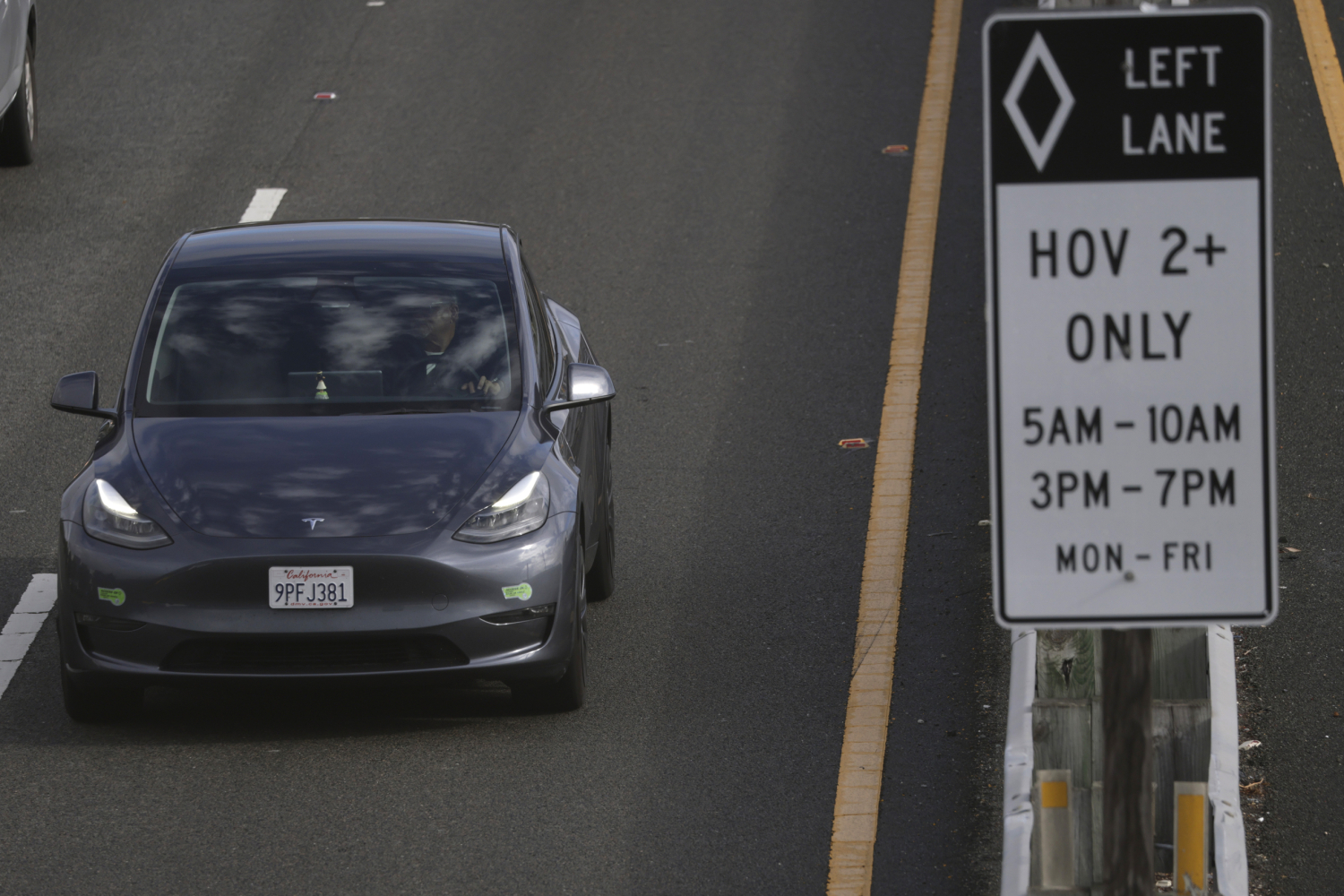Thought of the Day

Ghosts are going to be crazy in 100 years from now, someone is going to say “I saw a little boy in the hallway doing the Macarena then just disappeared!!”


Ghosts are going to be crazy in 100 years from now, someone is going to say “I saw a little boy in the hallway doing the Macarena then just disappeared!!”

By BOB SUTTON Associated Press
No. 8 Georgia Tech is a front-runner to reach the Atlantic Coast Conference championship game.
Staying on course will require the Yellow Jackets (8-0, 5-0) to avoid a misstep at N.C. State on Saturday night.
“We’re going into an environment up there that’s going to be an extremely challenging environment versus a challenging team,” Georgia Tech coach Brent Key said. “They haven’t gotten the outcome they’ve wanted the last few weeks. But if you turn the tape on and watch them play … you make a judgment based on the team and how they play.”
This is the sixth time in Georgia Tech history that the team is 8-0, and the first season since 1966. In each of those previous five situations, the Yellow Jackets won the next game to move to 9-0. Going back to last season, the Yellow Jackets own a program-tying seven consecutive ACC victories.
N.C. State (4-4, 1-3) has lost two in a row and four of its last five games. That includes giving up 89 points in losses at Notre Dame and Pittsburgh.
“Nobody’s given up,” Wolfpack coach Dave Doeren said. “We just got to play better and it starts with me. … (Our players are) frustrated, they’re mad, and they want to do something about it.”
Georgia Tech quarterback Haynes King is getting more attention with each win.
“He represents all that is great in college football,” Key said. “He is the best representative of any one individual for this entire sport that we play and we all love.”
Among King’s latest notable performances was completing 25 of 31 passes for 304 yards in last week’s 41-16 victory over Syracuse. That marked the highest single-game completion percentage in program history (.806) for a player with at least 30 attempts.
In last week’s game, he became the first Yellow Jacket to throw for three TDs and run for two more in the same game.
The rash of coaching firings at power conference schools hasn’t gone unnoticed in Raleigh. The Wolfpack will need a solid November to avoid back-to-back losing seasons for the first time under Doeren, who’s in his 13th season and is the program’s all-time winningest coach.
“I don’t worry about that,” he said. “I’ve got to worry about my players. I’ve got to worry about my staff, my wife, my children. Those decisions aren’t mine to make.”
These teams were in opposite ACC divisions for years, so they seldom met.
The Yellow Jackets won 30-29 last November in Atlanta, where the teams combined for 36 fourth-quarter points. Georgia Tech’s last visit to Raleigh came in 2020, suffering a 23-13 loss. That marked N.C. State’s first home victory against the Yellow Jackets since a 2000 overtime win.
Hollywood Smothers’ ACC-leading 825 rushing yards have come despite N.C. State’s last three Bowl Subdivision opponents holding him to less than 90 yards.
Smothers scored a touchdown last year at Georgia Tech, but quarterback CJ Bailey had three of the Wolfpack’s rushing scores in that game. Smothers ran for 86 yards last week on just eight carries in a game that saw Pitt build a big third-quarter lead.
This is the first meeting with either in the top 10 since 2002 — almost 23 years to the day — in a game that saw the Wolfpack holding a 9-0 record and a No. 10 national ranking entering a visit from Georgia Tech.
But the Yellow Jackets, who were just 5-3 at the time, derailed the Wolfpack’s perfect season with a 24-17 win in Raleigh that started a three-game skid for N.C. State.
___
AP freelance writer Alan Cole in Atlanta contributed to this report.

By JOSH BOAK, CHRIS MEGERIAN and MARK SCHIEFELBEIN Associated Press
ABOARD AIR FORCE ONE (AP) — President Donald Trump described his face-to-face with Chinese leader Xi Jinping on Thursday as a roaring success, saying he would cut tariffs on China, while Beijing had agreed to allow the export of rare earth elements and start buying American soybeans.
The president told reporters aboard Air Force One that the U.S. would lower tariffs implemented earlier this year as punishment on China for its selling of chemicals used to make fentanyl from 20% to 10%. That brings the total combined tariff rate on China down from 57% to 47%
“I guess on the scale from 0 to 10, with ten being the best, I would say the meeting was a 12,” Trump said. “I think it was a 12.”
Trump said that he would go to China in April and Xi would come to the U.S. “some time after that.” The president said they also discussed the export of more advanced computer chips to China, saying that Nvidia would be in talks with Chinese officials.
Trump said he could sign a trade deal with China “pretty soon.”
Xi said Washington and Beijing would work to finalize their agreements to provide “peace of mind” to both countries and the rest of the world, according to a report on the meeting distributed by state media.
“Both sides should take the long-term perspective into account, focusing on the benefits of cooperation rather than falling into a vicious cycle of mutual retaliation,” he said.
Despite Trump’s optimism after a 100-minute meeting with Xi in South Korea, there continues to be the potential for major tensions between the world’s two largest economies. Both nations are seeking dominant places in manufacturing, developing emerging technologies such as artificial intelligence, and shaping world affairs like Russia’s war in Ukraine.
Trump’s aggressive use of tariffs since returning to the White House for a second term, combined with China’s retaliatory limits on exports of rare earth elements, gave the meeting newfound urgency. There is a mutual recognition that neither side wants to risk blowing up the world economy in ways that could jeopardize their own country’s fortunes.
When the two were seated at the start of the meeting, Xi read prepared remarks that stressed a willingness to work together despite differences.
“Given our different national conditions, we do not always see eye to eye with each other,” he said through a translator. “It is normal for the two leading economies of the world to have frictions now and then.”
There was a slight difference in translation as China’s Xinhua News Agency reported Xi as telling Trump that having some differences is inevitable.
The leaders met in Busan, South Korea, a port city about 76 kilometers (47 miles) south from Gyeongju, the main venue for the Asia-Pacific Economic Cooperation summit.
In the days leading up to the meeting, U.S. officials signaled that Trump did not intend to make good on a recent threat to impose an additional 100% import tax on Chinese goods, and China showed signs it was willing to relax its export controls on rare earths and also buy soybeans from America.
Officials from both countries met earlier this week in Kuala Lumpur to lay the groundwork for their leaders. Afterward, China’s top trade negotiator Li Chenggang said they had reached a “preliminary consensus,” a statement affirmed by U.S. Treasury Secretary Scott Bessent who said there was “ a very successful framework.”
Shortly before the meeting on Thursday, Trump posted on Truth Social that the meeting would be the “G2,” a recognition of America and China’s status as the world’s biggest economies. The Group of Seven and Group of 20 are other forums of industrialized nations.
But while those summits often happen at luxury spaces, this meeting took place in humbler surroundings: Trump and Xi met in a small gray building with a blue roof on a military base adjacent to Busan’s international airport.
The anticipated detente has given investors and businesses caught between the two nations a sense of relief. The U.S. stock market has climbed on the hopes of a trade framework coming out of the meeting.
Trump has outward confidence that the grounds for a deal are in place, but previous negotiations with China this year in Geneva, Switzerland and London had a start-stop quality to them. The initial promise of progress has repeatedly given way to both countries seeking a better position against the other.
“The proposed deal on the table fits the pattern we’ve seen all year: short-term stabilization dressed up as strategic progress,” said Craig Singleton, senior director of the China program at the Foundation for Defense of Democracies. “Both sides are managing volatility, calibrating just enough cooperation to avert crisis while the deeper rivalry endures.”
The U.S. and China have each shown they believe they have levers to pressure the other, and the past year has demonstrated that tentative steps forward can be short-lived.
For Trump, that pressure comes from tariffs.
China had faced new tariffs this year totaling 30%, of which 20% were tied to its role in fentanyl production. But the tariff rates have been volatile. In April, he announced plans to jack the rate on Chinese goods to 145%, only to abandon those plans as markets recoiled.
Then, on Oct. 10, Trump threatened a 100% import tax because of China’s rare earth restrictions. That figure, including past tariffs, would now be 47% “effective immediately,” Trump told reporters on Thursday.
Xi has his own chokehold on the world economy because China is the top producer and processor of the rare earth minerals needed to make fighter jets, robots, electric vehicles and other high-tech products.
China had tightened export restrictions on Oct. 9, repeating a cycle in which each nation jockeys for an edge only to back down after more trade talks.
What might also matter is what happens directly after their talks. Trump plans to return to Washington, while Xi plans to stay on in South Korea to meet with regional leaders during the Asia-Pacific Economic Cooperation summit, which officially begins on Friday.
“Xi sees an opportunity to position China as a reliable partner and bolster bilateral and multilateral relations with countries frustrated by the U.S. administration’s tariff policy,” said Jay Truesdale, a former State Department official who is CEO of TD International, a risk and intelligence advisory firm.
___
Ken Moritsugu in Beijing and Seung Min Kim and Michelle Price in Washington contributed to this report. Boak reported from Tokyo and Megerian reported from Busan, South Korea.

This recipe is a classic treat with a Halloween twist!
1. Prepare strawberries
Make sure the strawberries are completely dry and line a baking sheet with parchment paper.
2. Melt the white chocolate
Place the white chocolate and coconut oil in a microwave-safe bowl and heat in 20–30 second intervals, stirring between each, until smooth and fully melted.
3. Dip the strawberries
Hold each strawberry by the stem and dip it into the melted white chocolate, coating it almost to the top. Let the excess chocolate drip off, then set each strawberry on the parchment paper.
4. Add the eyes
While the chocolate is still wet, gently press two candy eyeballs near the top front of each strawberry.
5. Chill and enjoy
Place the tray of strawberries in the fridge for about 15–20 minutes, or until the chocolate is firm. Then, serve chilled and enjoy this Halloween-themed treat!


If one door closes and other opens, your house is probably haunted!

By AARON BEARD AP Basketball Writer
Jon Scheyer inherited a seemingly impossible task at Duke in following retired Hall of Fame coaching great Mike Krzyzewski. Yet the sixth-ranked Blue Devils have kept on winning.
They’re starting this year as Atlantic Coast Conference favorite again.
The Blue Devils are coming off a 35-win season that included reaching the Final Four, while the 38-year-old Scheyer became the first coach to twice win the ACC Tournament in his first three seasons. The Blue Devils lost all five starters from that team — including Associated Press national player of the year and No. 1 overall NBA draft pick Cooper Flagg — but added the No. 1-ranked recruiting class and stand as the preseason pick to win a league race featuring No. 11 Louisville and 25th-ranked rival North Carolina.
This is the 10th time in 13 years that Duke is the ACC favorite. Winning the ACC will depend on integrating a recruiting class headlined by power forward Cameron Boozer — 247Sports’ No. 3-ranked recruit — alongside returnees like Isaiah Evans and Maliq Brown.
“I think if you keep putting yourself in that position of being in that moment, being right there, it’s only a matter of time before you break through,” Scheyer said of the program’s status as frequent national-title contender. “And I feel that’s where our program is.”
The Cardinals lost to the Blue Devils in last year’s ACC final and reached March Madness in Pat Kelsey’s first season. It was quick rise from a two-year wilderness under Kenny Payne: 12 wins, 52 losses, a 5-35 record in ACC regular-season play.
Louisville is Duke’s top challenger, with Kelsey having retooled his roster through the transfer portal.
“We don’t talk about the past. We don’t talk about the future,” Kelsey said. “Our sole focus is excellence in the now.”
Darrion Williams helped Texas Tech reach the NCAA Elite Eight last year before declaring for the NBA draft. But the 6-foot-6 guard returned to college basketball for his senior season and transferred to N.C. State, where he is preseason ACC player of the year under new coach Will Wade.
The league returns two top-tier scorers in Notre Dame point guard Markus Burton (league-best 21.3 points) and Syracuse guard J.J. Starling (seventh at 17.8).
Beyond the Wolfpack’s Williams, the Cardinals added three of 247Sports’ top 20 transfers in Ryan Conwell, Isaac McKneely and Adrian Wooley — all 6-4 guards who shot better than 40% on 3-pointers last year.
Conwell averaged 16.5 points at Xavier and will play for his fourth school in as many seasons. McKneely averaged 14.4 points at Virginia, while Wooley (18.8) was Conference USA freshman of the year at Kennesaw State.
North Carolina added 7-footer Henri Veesaar, who left Arizona to join a Tar Heels team that desperately needs reliable frontcourt play.
Boozer is one of six McDonald’s All-American freshmen, including Duke teammates in his brother Cayden (a point guard) and forward Nikolas Khamenia.
UNC will lean on forward Caleb Wilson, a two-way talent with athleticism and length. Wilson joins Boozer and Louisville point guard Mikel Brown Jr. as high-end NBA talents considered to be possible one-and-done prospects.
Notre Dame also landed a McDonald’s all-American in guard Jalen Haralson, the Fighting Irish’s highest-ranked prospect in the modern era.
The league has four new coaches: Wade, Florida State’s Luke Loucks, Miami’s Jai Lucas and Virginia’s Ryan Odom.
The 42-year-old Wade is back in the power-conference ranks after his ouster from LSU amid NCAA trouble. He won big in two seasons at McNeese and replaces the fired Kevin Keatts.
Loucks, 35, arrives from years in the NBA to take over at his alma mater for longtime coach Leonard Hamilton.
Lucas, 36, left the Duke staff to take over the Hurricanes, who saw coach Jim Larrañaga step aside last December and finished out under interim coach Bill Courtney.
Odom, 51, takes over a Virginia program that lost longtime coach Tony Bennett to retirement shortly before last season. The former VCU coach grew up in Charlottesville around the program while his father, Dave, was an assistant in the 1980s.
The ACC will have an 18-game league slate, down from 20 games, as the league tries to reverse a downward trend of NCAA bids (four last year). The move is designed to give ACC teams two more spots to schedule quality nonconference matchups that could bolster postseason résumés. The ACC had moved to 20 games in 2019-20 with the arrival of the ESPN-partnered ACC Network.
Champion: Duke; 2) Louisville; 3) UNC; 4) N.C. State; 5) Virginia; 6) SMU; 7) Clemson; 8) Miami; 9) Syracuse; 10) Notre Dame; 11) Wake Forest; 12) Virginia Tech; 13) Georgia Tech; 14) Pittsburgh; 15) FSU; 16) California; 17) Stanford; 18) Boston College.

SMITHFIELD, N.C. (AP) — The North Carolina man accused of killing four of his children after human remains were found inside the trunk of a vehicle at their home appears to have spread the slayings over several months, a sheriff said Wednesday.
Wellington Delano Dickens III, 38, was charged Tuesday with four counts of murder. The sheriff’s office said investigators believe Dickens killed three of his biological children, ages 6, 9 and 10, as well as his 18-year-old stepchild.
Dickens had contacted Johnston County 911 late Monday and said he had killed his children. He told deputies that arrived at his home on the outskirts of Zebulon — about 25 miles (40 kilometers) east of Raleigh — that four of his children were deceased and had been placed inside the vehicle parked in his garage, the Johnston County Sheriff’s Office said.
The arrest warrants filed against Dickens listed May 1 as the date of the killings. But Sheriff Steve Bizzell said at a news conference in nearby Smithfield on Wednesday that based on interviews investigators now believe the deaths were spread out over time.
Bizzell said Dickens killed his 6-year-old child in May, the 9-year-old in August, the 10-year-old in late August or early September, and the 18-year-old in September. The state medical examiner’s office is trying to determine how they died, he added.
Bizzell said he didn’t yet know why Dickens killed the children, “but as the sheriff, as a father and as a grandfather, I can stand here and say there’s no reason for a father to murder his children.”
In a 911 call recording obtained Wednesday by WRAL-TV, a man who identified himself as Wellington Dickens and giving the home’s address tells the dispatcher that he had killed his children.
“It’s a lot to explain, but in a nutshell it’s probably my fault … It’s my fault. It’s bad,” the man says, adding that he didn’t use knives or firearms.
“It started out as me over-disciplining — that’s it,” he says. “I beat on them sometimes. They didn’t want to eat, I didn’t force them to eat, I’ve told them it was a punishment not to eat. I did a bunch of different little things.”
Dickens remained held without bond after a Wednesday afternoon hearing on three of the counts, records show. He made his first court appearance Tuesday on the other murder count. Reached by phone, Michelle Moore, Dickens’ court-appointed attorney, declined to comment. Dickens’ next court appearance is Nov. 13.
Johnston County District Attorney Jason Waller said the investigation remains active and ongoing.
The deputies who responded to Dickens’ 911 call found his 3-year-old son alive inside the home, as Dickens had told them they would, authorities said. The sheriff’s office said the 3-year-old was unharmed.
The deputies discovered human bodies in the trunk and they appeared to have died some time ago, Bizzell said.
Dickens’ great uncle told a television station Tuesday that Dickens was an Iraq War veteran.
Some neighbors said Tuesday that they didn’t remember seeing the family, especially after Dickens’ wife, Stephanie Rae Jones Dickens, died in April 2024. Authorities had determined she died from complications from a miscarriage, and doctors ruled her death as natural, Bizzell said.
Asked how the children’s deaths were concealed for so long, sheriff’s Capt. Don Pate said the family members “were just very secluded” and that Dickens’ extended family was not welcome to visit.
“The neighbors said they never saw them come outside, and they were homeschooled, so they were just confined to the house,” Pate said.
Bizzell said deputies went to the same Zebulon home with emergency workers when Stephanie Dickens died last year. The sheriff said it was determined then that she had experienced excessive bleeding the night prior but refused to go for medical treatment.

By ALEXA ST. JOHN Associated Press
DETROIT (AP) — Making electric vehicles and their batteries is a dirty process that uses a lot of energy. But a new study says that EVs quickly make up for that with less overall emissions through two years of use than a gas-powered vehicle.
The study also estimated that gas-powered vehicles cause at least twice as much environmental damage over their lifetimes as EVs, and said the benefits of EVs can be expected to increase in coming decades as clean sources of power, such as solar and wind, are brought onto the grid.
The work by researchers from Northern Arizona University and Duke University, published Wednesday in the journal PLOS Climate, offers insight into a transportation sector that makes up a big part of U.S. emissions. It also comes as some EV skeptics have raised concerns about whether the environmental impact of battery production, including mining, makes it worthwhile to switch to electric.
“While there is a bigger carbon footprint in the very short term because of the manufacturing process in creating the batteries for electric vehicles, very quickly you come out ahead in CO2 emissions by year three and then for all of the rest of the vehicle lifetime, you’re far ahead and so cumulatively much lower carbon footprint,” said Drew Shindell, an earth science professor at Duke University and study co-author.
The researchers evaluated several harmful air pollutants monitored by the Environmental Protection Agency, as well as emissions data, to compare the relative impact over time of EVs and internal combustion engines on air quality and climate change.
Their analysis said that EVs produce 30% higher carbon dioxide emissions than gasoline vehicles in their first two years. That can be attributed to the energy-intensive production and manufacturing processes involved in mining lithium for EV batteries.
They also sought to account for how the U.S. energy system might develop in coming years, assuming growth in clean energy. And they modeled four different scenarios for EV adoption, ranging from the lowest — a 31% share of vehicle sales — to the highest, 75% of sales, by 2050. (EV sales accounted for about 8% of new vehicle sales in the U.S. in 2024.)
The researchers said the average of those four models found that for each additional kilowatt hour of lithium-ion battery output, carbon dioxide emissions drop by an average of 220 kilograms (485 pounds) in 2030, and another 127 kilograms (280 pounds) in 2050.
The consistent decrease in CO2 emissions from EVs is “not only driven by the on-road vehicles, but also reduction that has been brought due to electricity production,” said lead author Pankaj Sadavarte, a postdoctoral researcher at Northern Arizona University.
Greg Keoleian, a University of Michigan professor of sustainable systems who wasn’t involved in the research, called it a “valuable study” that echoes other findings and “confirms the environmental and economic benefits” of EVs.
“Accelerating the adoption of battery electric vehicles is a key strategy for decarbonizing the transportation sector which will reduce future damages and costs of climate change,” he said.
Shindell, the Duke researcher, said the grid will evolve to have more solar and wind power.
“When you add a bunch of electric vehicles, nobody’s going to build new coal-fired power plants to run these things because coal is really expensive compared to renewables,” he said. “So the grid just overall becomes much cleaner in both the terms of carbon emissions for climate change, and for air pollution.”
Outside experts agreed — as long as the policy landscape supports it. That hasn’t been the case under President Donald Trump, who has worked to boost fossil fuels and restrain solar and wind power development.
“The great news is the rest of the world isn’t slowing down in terms of its embrace of this technology,” said Ellen Kennedy, principal for carbon-free transportation at RMI, a clean energy nonprofit. As for the U.S., she said, “I think it’s important to keep in mind states and local governments, there’s a lot that’s happening on those fronts.”
One thing the study didn’t address was recycling or disposal of batteries at the end of their life. Kennedy said battery recycling will improve, helping to address one of the environmental impacts of their production.
The study comes at a notable time given the challenges that EVs face in the U.S.
EVs have seen more interest in recent years as an alternative to gas-powered cars and trucks — particularly as they become more affordable and charging infrastructure becomes more available.
But growth has slowed amid shifting federal policy toward EVs and an industry step back from ambitious EV production promises.
Former President Joe Biden set a target for 50% of all new vehicle sales in the U.S. to be electric by 2030. But Trump reversed that policy, and Congress has terminated federal tax credits for an EV purchase. The administration has also targeted vehicle pollution rules that would encourage greater uptake of EVs in the U.S., and the president has attempted to halt a nationwide EV charging buildout.
“The study is important to show how really misguided the current administration’s policies are,” Shindell said. “If we want to protect us from climate change and from the very clear and local damage from poor air quality, this is a really clear way to do it: Incentivize the switch from internal combustion engines to EVs.”
___
Alexa St. John is an Associated Press climate reporter. Follow her on X: @alexa_stjohn. Reach her at [email protected].
___
Read more of AP’s climate coverage.
___
The Associated Press’ climate and environmental coverage receives financial support from multiple private foundations. AP is solely responsible for all content. Find AP’s standards for working with philanthropies, a list of supporters and funded coverage areas at AP.org.

By CHRISTOPHER RUGABER AP Economics Writer
WASHINGTON (AP) — The Federal Reserve cut its key interest rate Wednesday for a second time this year as it seeks to shore up economic growth and hiring even as inflation stays elevated.
“Job gains have slowed this year, and the unemployment rate has edged up but remained low through August,” the Fed said in a statement issued Wednesday. “More recent indicators are consistent with these developments.” The government hasn’t issued unemployment data after August because of the shutdown. The Fed is watching private-sector figures instead.
Wednesday’s decision brings the Fed’s key rate down to about 3.9%, from about 4.1%. The central bank had cranked its rate to roughly 5.3% in 2023 and 2024 to combat the biggest inflation spike in four decades. Lower rates could, over time, reduce borrowing costs for mortgages, auto loans, and credit cards, as well as for business loans.
The move comes amid a fraught time for the central bank, with hiring sluggish and yet inflation stuck above the Fed’s 2% target. Compounding its challenges, the central bank is navigating without the economic signposts it typically relies on from the government, including monthly reports on jobs, inflation and consumer spending, which have been suspended because of the government shutdown. The Fed has signaled it may reduce its key rate again in December but the data drought raises the uncertainty around its next moves.
The Fed typically raises its short term rate to combat inflation, while it cuts rates to encourage borrowing and spending and shore up hiring. Right now its two goals are in conflict, so it is reducing borrowing costs to support the job market, while still keeping rates high enough to avoid stimulating the economy so much that it worsens inflation.
Speaking to reporters after the Fed’s announced its rate decision, Fed chair Jerome Powell said there were “strongly differing views about how to proceed in December” at the policy meeting and a further reduction in rates is not “a foregone conclusion.”
On Wednesday, the Fed also said it would stop reducing the size of its massive securities holdings, which it accumulated during the pandemic and after the 2008-2009 Great Recession. The change, to take effect Dec. 1, could over time slightly reduce longer-term interest rates on things like mortgages but won’t have much impact on consumer borrowing costs.
The Fed purchased nearly $5 trillion of Treasury securities and mortgage-backed bonds from 2020 to 2022 to stabilize financial markets during the pandemic and keep longer-term interest rates low. The bond-buying lifted its securities holdings to $9 trillion.
In the past three years, however, the Fed has reduced its holdings to about $6.6 trillion. To shrink its holdings, the Fed lets securities mature without replacing them, reducing bank reserves. In recent months, however, the reductions appeared to disrupt money markets, threatening to push up shorter-term interest rates.
Two of the 12 officials who vote on the Fed’s rate decisions dissented, but in different directions. Fed governor Stephen Miran dissented for the second straight meeting in favor of a half-point cut. Miran was appointed by President Donald Trump just before the central bank’s last meeting in September.
Jeffrey Schmid, President of the Federal Reserve Bank of Kansas City, voted against the move because he preferred no change to the Fed’s rate. Schmid has previously expressed concern that inflation remains too high.
Trump has repeatedly attacked Powell for not reducing borrowing costs more quickly. In South Korea early Wednesday he repeated his criticisms of the Fed chair.
“He’s out of there in another couple of months,” Trump said. Powell’s term ends in May. On Monday, Treasury Secretary Scott Bessent confirmed the administration is considering five people to replace Powell, and will decide by the end of this year.
Meanwhile, the government shutdown has interrupted economic data. September’s jobs report, scheduled to be released three weeks ago, is still postponed. This month’s hiring figures, to be released Nov. 7, will likely be delayed and may be less comprehensive when they are finally released. And the White House said last week that October’s inflation report may never be issued at all.
The data drought raises risks for the Fed because it is widely expected to keep cutting rates in an effort to shore up growth and hiring. Yet should job gains pick up soon, the Fed may not detect the change. And if hiring rebounds after weak job gains during the summer, further rate cuts may not be justified.
Before the government shutdown cut off the flow of data Oct. 1, monthly hiring gains had weakened to an average of just 29,000 a month for the previous three months, according to the Labor Department’s data. The unemployment rate ticked up to a still-low 4.3% in August from 4.2% in July.
More recently, several large corporations have announced sweeping layoffs, including UPS, Amazon, and Target, which threatens to boost the unemployment rate if it continues.
Meanwhile, last week’s inflation report — released more than a week late because of the shutdown — showed that inflation remains elevated but isn’t accelerating and may not need higher interest rates to tame it.
The government’s first report on the economy’s growth in the July-September quarter was scheduled to be published on Thursday, but will be delayed, as will Friday’s report on consumer spending that also includes the Fed’s preferred inflation measure.
Fed officials say they are monitoring a range of other data, including some issued by the private sector, and don’t feel handicapped by the lack of government reports.

This recipe is a tried-and-true appetizer favorite. If you’re in the Halloween spirit, you can add candy eyes to turn them into the perfect mummy appetizer!
1. Preheat the oven
Preheat oven to 375°F and line a baking sheet with parchment paper.
2. Prepare the dough
Unroll the crescent roll dough and separate it into triangles.
3. Wrap the hot dogs
Place one hot dog at the wide end of each triangle and roll up toward the point.
4. Bake
(Optional) brush tops with beaten egg and sprinkle with sesame or poppy seeds. Then, bake for 12–15 minutes, or until golden brown.
5. Serve them up!
Serve hot and enjoy with condiments of choice!